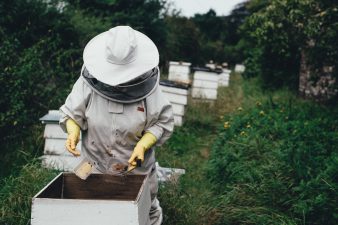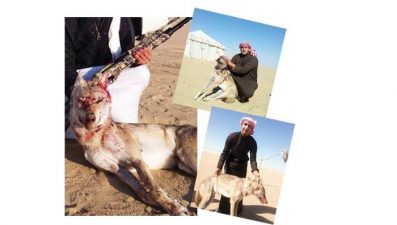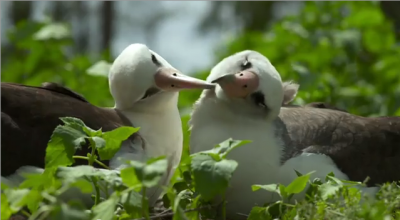 Oryx, giraffes and cheetahs – species once facing regional extinction – are making a robust reappearance on a desert island off the coast of Abu Dhabi. Sheikh Zayed Bin Sultan al-Nahayan, founder of the United Arab Emirates (UAE), created the remote nature reserve in 1971. Forty years after Sir Bani Yas island received its first ‘imported’ animals, over 13,000 protected creatures now call the “Arabian Ark” home.
Oryx, giraffes and cheetahs – species once facing regional extinction – are making a robust reappearance on a desert island off the coast of Abu Dhabi. Sheikh Zayed Bin Sultan al-Nahayan, founder of the United Arab Emirates (UAE), created the remote nature reserve in 1971. Forty years after Sir Bani Yas island received its first ‘imported’ animals, over 13,000 protected creatures now call the “Arabian Ark” home.
Twenty-five species of mammals, including striped hyenas, desert lynx, and Arabian Oryx, and 170 types of birds live on the 3,500 acre reserve. The antelope-like oryx once roamed freely across the Arabian Peninsula but rampant hunting made the species extinct in the wild. Some remained in zoos and in small nature reserves, but conservationists believe the last remaining wild Arabian Oryx killed in the Omani desert in 1972.
An ambitious breeding program at the Arabian Ark has produced about 500 oryx and in 2011, the International Union for Conservation of Nature removed the animal from the global list of endangered species, now classifying them as ‘vulnerable’.
Other island inhabitants include Axis deer and the Arabian tahr, a small goat-like mammal indigenous to the Hajar Mountains that cross between the UAE and Oman. Sand and mountain gazelles have been “re-wilded”, a process that teaches animals raised in captivity to survive on their own. Park managers have also introduced non-indigenous animals such as the scimitar-horned oryx, the reticulated giraffe and blackbuck antelope to the island habitat.
In 2008, the reserve imported four cheetahs to help maintain a natural balance between species. They taught the captivity-bred cheetahs to hunt, mainly sand gazelles. Two years later, conservationists recorded the first cheetah cubs born on the island. Like the Arabian Oryx, the once-indigenous cheetah had become extinct in the Middle East wild by the early 1970s.
The island is 106 miles from the capital of Abu Dhabi and is accessed by boat or airplane. The Tourism Development & Investment Company (TDIC) is developing the island, which opened to the public six years ago.
Visitors can explore the reserve in guided safaris, ride bikes along the expansive beachfront, hike its wadis (valleys) and enjoy its pristine beaches. There is a water sports center for snorkeling and sailing and four resorts – three deemed “luxury”.
“In 1992, we began exploration and excavation works and have since uncovered 36 archeological sites, most importantly a Christian monastery dating back to 600 AD,” Fatima Mutawaa of TDIC told News.Com.Au.
Each island visit results in a mangrove planting, either by tourists or by the reserve on their behalf. To date, the program has planted about 2.5 million trees on Sir Bani Yas.
Looking for an antidote to the shopping malls and skyscrapers of Dubai and Abu Dhabi? Check out Sir Bani Yas island and experience the raw, natural environment of the UAE.
Images from AFP






